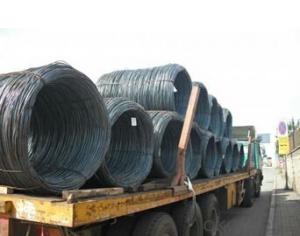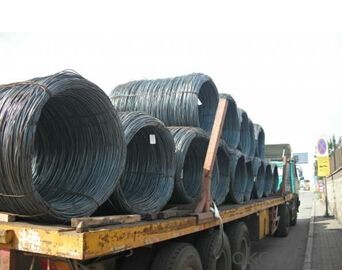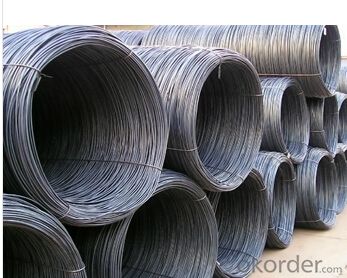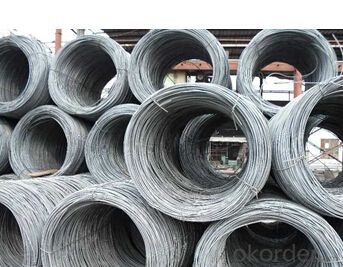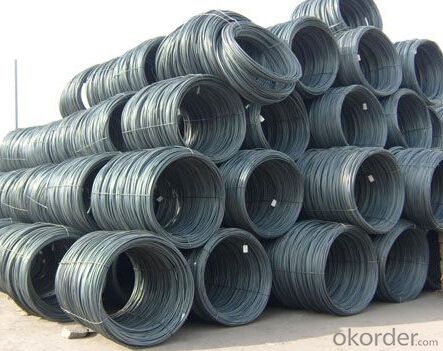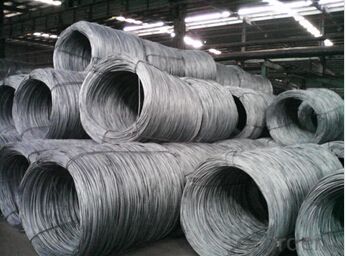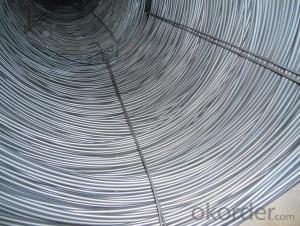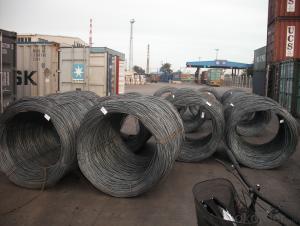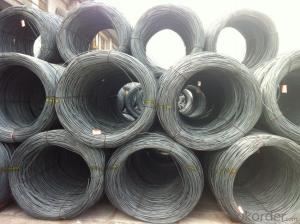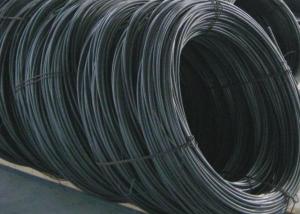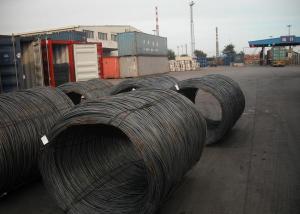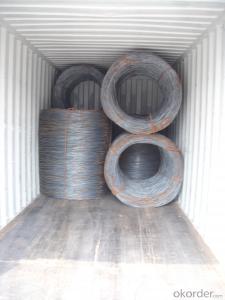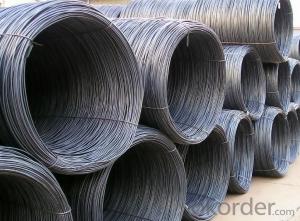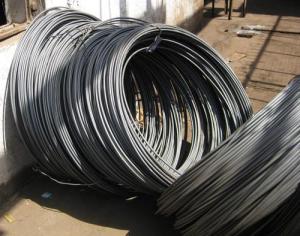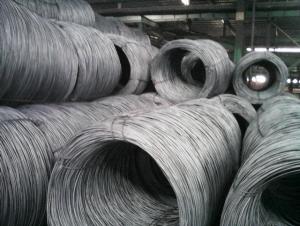Hot Rolled Carbon Steel Wire Rod
- Loading Port:
- China Main Port
- Payment Terms:
- TT or LC
- Min Order Qty:
- -
- Supply Capability:
- -
OKorder Service Pledge
OKorder Financial Service
You Might Also Like
Product Description:
OKorder is offering high quality Hot Rolled Carbon Steel Wire Rod at great prices with worldwide shipping. Our supplier is a world-class manufacturer of steel, with our products utilized the world over. OKorder annually supplies products to European, North American and Asian markets. We provide quotations within 24 hours of receiving an inquiry and guarantee competitive prices.
Product Applications:
Hot Rolled Carbon Steel Wire Rod are ideal for structural applications and are widely used in the construction of buildings and bridges, and the manufacturing, petrochemical, and transportation industries.
Hot Rolled Carbon Steel Wire Rod Advantages:
OKorder's Hot Rolled Carbon Steel Wire Rod are durable, strong, and resist corrosion.
Hot Rolled Carbon Steel Wire Rod Main Product Features :
· Premium quality
· Prompt delivery & seaworthy packing (30 days after receiving deposit)
· Corrosion resistance
· Can be recycled and reused
· Mill test certification
· Professional Service
· Competitive pricing
Specifications of Hot Rolled Carbon Steel Wire Rod:
Steel Grade: Q195/235, SAE1006-1018B Standard: ASTM, GB
Diameter: 5.5mm, 6.5mm, 7mm,8mm,9mm,10mm,12mm,14mm
Diameter tolerance: ±0.3mm Type: in coil, coil weight around 2MT
Technique: Hot Rolled
Place of Origin: China Mainland
Surface: round, no twisted, light and smooth
Chemical Composition: (Please kindly find our chemistry of our material based on Q195、Q235A and Q235B as below for your information)
Trademark | Rank | Chemical composition (quality score) % | |||||
C | Si | Mn | S | P | |||
| ≤ |
| ≤ | ≤ | |||
Q195 |
| 0.06-0.12 | 0.30 | 0.25 | 0.050 | 0.045 | |
Q235 | A | 0.14-0.22 | 0.30 | 0.30-0.65 | 0.050 | 0.045 | |
Q235 | B | 0.12-0.20 | 0.30 | 0.30-0.70 | 0.045 | 0.045 | |
Trademark | Rank | Pulling Test | |||||
Bend PointΔs/Mpa | Tensile Strength | Elongation Ratioδ5% | |||||
Thickness (Diameter) /MM | Thickness (Diameter) /MM | ||||||
≤16 | 16-40 | ≤16 | 16-40 | ||||
≥ | ≥ | ||||||
Q195 |
| 195 | 185 | 315-390 | 33 | 32 | |
Q235 | A | 235 | 225 | 375-500 | 26 | 25 | |
Q235 | B | 235 | 225 | 375-500 | 26 | 25 | |
Usage and Applications of Carbon Steel Wire Rod:
After hot-rolled the products shaped into coil and delivery as finished product, including round, square, rectangular, hexagonal and so on. Since most of the products are round, it is generally called wire rod. Carbon steel wire rod is widely used in construction and manufacturing. Carbon steel wire rod is mainly used for reinforcement of reinforced concrete and welded structure or reprocessed (roberts , nail, etc.) materials, especially used to produce wire drawing, welding electrode, nails, spring, electronic, precise machinery parts and so on.
Packaging & Delivery of Carbon Steel Wire Rod:
Packaging Detail: products are packed in coil, each coil weight around 2 MT, and then shipped by container or bulk vessel
Delivery Detail: within 45 days after received deposit or LC.
Label: to be specified by customer, generally, each bundle has 1-2 labels
Trade terms: FOB, CFR, CIF
Carbon Steel Wire Rod on Port
Carbon Steel Wire Rod in Container
Note:
1. Our products are produced according to national standard (GB), if not, supply according to national standards (GB) or agreement as customer required.
2. Other Grade and Standard carbon steel wire rod we can supply:
Grade:H08A, 30MnSi, 62B-82B
Standard: AISI, BS, JIS, DIN
The Minimum Order Quantity of these products is high, and need to be confirmed.
3. We can not only supply carbon steel wire rod; if you need anything about building materials, please contact us.
4. Please send us your detail specifications when inquire. We will reply to you as soon as possible.We sincerely hope we can establish a long stable business relationship.
FAQ:
Q1: Why buy Materials & Equipment from OKorder.com?
A1: All products offered byOKorder.com are carefully selected from China's most reliable manufacturing enterprises. Through its ISO certifications, OKorder.com adheres to the highest standards and a commitment to supply chain safety and customer satisfaction.
Q2: How do we guarantee the quality of our products?
A2: We have established an advanced quality management system which conducts strict quality tests at every step, from raw materials to the final product. At the same time, we provide extensive follow-up service assurances as required.
Q3: How soon can we receive the product after purchase?
A3: Within three days of placing an order, we will begin production. The specific shipping date is dependent upon international and government factors, but is typically 7 to 10 workdays.
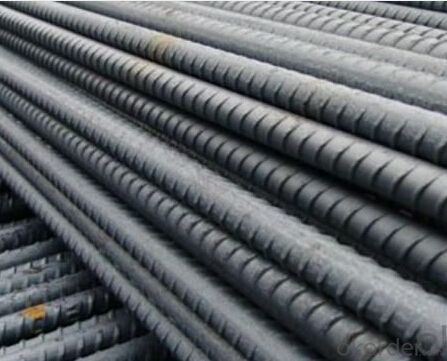
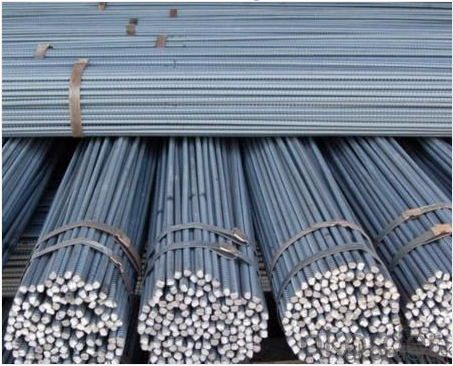
- Q: What are the different fatigue testing methods for steel wire rod?
- There are several fatigue testing methods for steel wire rods, including rotating bending fatigue tests, axial fatigue tests, torsional fatigue tests, and fretting fatigue tests. Each method has its own advantages and is used to evaluate the fatigue performance of steel wire rods under different loading conditions.
- Q: What are the common methods used to remove surface defects in steel wire rod?
- There are several common methods used to remove surface defects in steel wire rods. One of the most widely used methods is mechanical polishing, which involves using abrasive materials such as sandpaper or grinding wheels to remove the defects on the surface of the wire rod. This method is effective in removing small surface imperfections and creating a smooth and even surface. Another common method is chemical pickling, which involves immersing the wire rod in an acid bath to remove the surface defects. The acid reacts with the impurities on the surface of the rod, dissolving them and leaving behind a clean surface. Pickling is particularly effective in removing scale, rust, and other oxidation products from the surface of the wire rod. Electrochemical cleaning is another method used to remove surface defects in steel wire rods. This method involves passing an electric current through the wire rod while it is immersed in an electrolyte solution. The electric current causes the surface defects to dissolve and migrate away from the wire rod, resulting in a cleaner and smoother surface. Shot blasting is another commonly used method for removing surface defects in steel wire rods. This process involves propelling small metal or abrasive particles at high speed onto the surface of the wire rod. The particles impact the surface, removing any defects or contaminants and leaving behind a clean and textured surface. Lastly, chemical passivation is a method that is often used to remove surface defects in stainless steel wire rods. This process involves immersing the wire rod in a chemical solution that forms a protective oxide layer on the surface, removing any defects and preventing further corrosion. Overall, these methods are commonly used in the steel industry to remove surface defects in wire rods, depending on the specific type of defect and the desired outcome.
- Q: How are steel wire rods used in the production of reinforcements for concrete?
- The production of reinforcements for concrete heavily relies on steel wire rods. Utilizing high-quality steel, these wire rods undergo a process known as hot rolling to be manufactured. Within the realm of concrete reinforcement production, steel wire rods serve as the building blocks for various types of reinforcements. Wire mesh, rebar, and welded wire fabric are among the creations resulting from these rods. These reinforcements are incorporated into concrete structures to bolster their strength, endurance, and resistance against cracks. To fashion wire mesh, steel wire rods undergo initial straightening, followed by cutting into desired lengths. Subsequently, these lengths are welded together, forming a grid-like pattern. Within the concrete structure, the wire mesh contributes tensile strength, effectively preventing the formation and propagation of cracks. Rebar, another prevalent reinforcement, involves bending and cutting steel wire rods into specific shapes and sizes. These rebars find their place embedded within the concrete, offering structural support and fortifying the concrete against tension forces. Columns, beams, and slabs frequently employ rebars to ensure the soundness of concrete structures. Steel wire rods can also be utilized in the production of welded wire fabric, which constitutes intersecting steel wires. At the points of intersection, the wires are welded together, generating a resilient mesh. Welded wire fabric frequently finds application in larger concrete structures like bridges and highways, effectively distributing loads and averting cracks. In summary, steel wire rods occupy a crucial role in the realm of concrete reinforcement production. By supplying the requisite strength, durability, and crack resistance, these rods guarantee the stability and longevity of concrete structures.
- Q: What are the common applications of half-hard steel wire rod?
- Half-hard steel wire rod is commonly used in various applications due to its specific properties and characteristics. Some of the common applications of half-hard steel wire rod include: 1. Wire forming: Half-hard steel wire rod is widely used in wire forming processes, such as bending, twisting, and shaping into different forms and sizes. It can be used to create wire-based products like springs, clips, hooks, and fasteners. 2. Construction industry: Half-hard steel wire rod is used in the construction industry for reinforcing concrete structures. It is often used as reinforcement in concrete slabs, walls, beams, and columns, providing tensile strength and stability to the structure. 3. Automotive industry: Half-hard steel wire rod is utilized in the automotive industry for various purposes. It is commonly used in manufacturing automotive springs, including suspension springs, seat springs, and valve springs. The high strength and resilience of half-hard steel wire rod make it ideal for these applications. 4. Manufacturing of wire products: Half-hard steel wire rod is used in the manufacturing of a wide range of wire products. It is commonly used in the production of wire mesh, wire ropes, cables, fencing, and wire-based filters. The half-hardness of the steel wire rod allows for the desired flexibility and strength required for these applications. 5. Electrical and electronic industry: Half-hard steel wire rod is used in the electrical and electronic industry for various purposes. It is commonly used in the production of electrical and communication cables, providing strength and durability to the cables. It is also used in the manufacturing of electronic components and connectors. 6. Jewelry making: Half-hard steel wire rod is sometimes used in jewelry making, especially for creating wire-based jewelry designs. It can be shaped into various forms, such as rings, bracelets, and pendants, and its half-hardness allows for the desired level of flexibility and durability. Overall, half-hard steel wire rod finds its applications in various industries and sectors due to its strength, malleability, and usability in wire-based products and structures.
- Q: How is the ductility of steel wire rod measured?
- The ductility of steel wire rod is typically measured using a test called the tensile test. In this test, a sample of the wire rod is pulled in opposite directions until it breaks. The elongation and reduction in cross-sectional area of the wire rod during the test are then measured to determine its ductility.
- Q: How is the impact resistance of steel wire rod tested?
- The impact resistance of steel wire rod is typically tested using a Charpy impact test. In this test, a notched specimen of the wire rod is subjected to a swinging pendulum that strikes and breaks the specimen. The energy absorbed by the specimen during fracture is measured, which provides an indication of its impact resistance.
- Q: How is steel wire rod used in the production of wire mesh?
- Steel wire rod is an essential component in the production of wire mesh. Wire mesh, also known as wire cloth or wire fabric, is a versatile material that is used in various industries for different purposes. The production of wire mesh begins with the manufacturing of steel wire rod. Steel wire rod is produced through a process called hot rolling, where molten steel is passed through a series of rollers to form a long, continuous rod with a specific diameter. The diameter of the steel wire rod can vary depending on the desired end product and application of the wire mesh. Once the steel wire rod is produced, it is then drawn through a series of dies to reduce its diameter further. Drawing the wire rod through these dies not only reduces its diameter but also improves its tensile strength and surface finish. This drawn wire is now ready to be used in the production of wire mesh. The steel wire rod is fed into a wire mesh machine, where it goes through a series of processes to form the wire mesh. The wire is first straightened and then cut into the desired length. These cut lengths of wire are then fed into a weaving machine, where they are interwoven to form the mesh pattern. The wire mesh machine uses various techniques to create different types of wire mesh, such as plain weave, twill weave, or Dutch weave. The steel wire rod acts as the building blocks for these patterns, providing the strength and durability needed for the wire mesh to withstand various applications. Once the wire mesh is woven, it undergoes further processes, such as galvanizing or coating, to enhance its properties. Galvanizing involves coating the wire mesh with a layer of zinc to protect it from corrosion, while coating can provide additional properties like resistance to heat, chemicals, or abrasion. In summary, steel wire rod is a crucial material in the production of wire mesh. It is used as the starting material, which is then processed and woven to create various types of wire mesh patterns. The steel wire rod provides the necessary strength and durability for the wire mesh to be used in different industries and applications.
- Q: How are steel wire rods used in the manufacturing of wire brushes?
- Steel wire rods are used in the manufacturing of wire brushes as they serve as the primary material for the bristles. By shaping and cutting the steel wire rods into specific lengths and configurations, manufacturers can create strong and durable bristles that are capable of effectively cleaning and scrubbing various surfaces. The steel wire rods are twisted or crimped into the brush head, providing the necessary stiffness and flexibility to remove dirt, debris, and rust from a wide range of objects and surfaces.
- Q: What are the different types of steel wire rod surface cleaning methods for wire drawing?
- There are several different types of steel wire rod surface cleaning methods that are commonly used in the wire drawing process. These methods are essential for removing any impurities or contaminants from the surface of the wire rod, ensuring a smooth and high-quality finished product. 1. Acid Pickling: Acid pickling is one of the most widely used methods for cleaning steel wire rod surfaces. This process involves immersing the wire rod in a bath of acid, typically hydrochloric acid, which helps to remove any rust, scale, or oxide layers. Acid pickling is effective in removing surface impurities and provides a clean surface for subsequent wire drawing processes. 2. Electrolytic Cleaning: Electrolytic cleaning is another commonly used method for removing contaminants from steel wire rod surfaces. In this process, an electric current is passed through the wire rod immersed in an electrolytic solution. The current causes the contaminants to dissolve and separate from the surface of the wire rod. Electrolytic cleaning can effectively remove oils, greases, and other organic substances from the wire rod surface. 3. Mechanical Cleaning: Mechanical cleaning methods involve the use of abrasive materials or brushes to physically scrub and clean the surface of the wire rod. This process can be done manually or using specialized machinery. Mechanical cleaning is effective in removing stubborn dirt, rust, or scale from the wire rod surface. 4. Shot Blasting: Shot blasting is a process that involves propelling small metallic or non-metallic particles against the wire rod surface at high speeds. The impact of the particles helps to remove any surface contaminants, scale, or rust. Shot blasting is particularly useful for cleaning wire rods with intricate shapes or hard-to-reach areas. 5. Ultrasonic Cleaning: Ultrasonic cleaning utilizes high-frequency sound waves to create tiny bubbles in a cleaning solution. The bubbles collapse upon contact with the wire rod surface, creating a scrubbing action that helps to remove contaminants. Ultrasonic cleaning is effective in removing fine particles, oils, and greases from the wire rod surface. Each of these steel wire rod surface cleaning methods has its advantages and limitations, and the choice of method depends on factors such as the type of contaminants, wire rod composition, and desired cleanliness level. The selection of the appropriate cleaning method is crucial to ensure optimal wire drawing performance and the production of high-quality wire products.
- Q: What are the main factors affecting the market mergers of steel wire rod?
- The main factors affecting the market mergers of steel wire rod include industry consolidation, market demand and competition, regulatory environment, technological advancements, and cost considerations.
Send your message to us
Hot Rolled Carbon Steel Wire Rod
- Loading Port:
- China Main Port
- Payment Terms:
- TT or LC
- Min Order Qty:
- -
- Supply Capability:
- -
OKorder Service Pledge
OKorder Financial Service
Similar products
Hot products
Hot Searches
Related keywords
